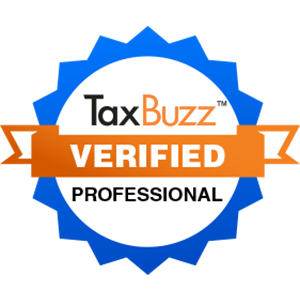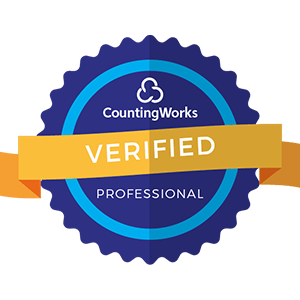
Introduction: In today's fast-paced business world, Human Resources (HR) departments face numerous challenges in managing the ever-growing demands of their workforce. From recruiting and onboarding to performance management and employee engagement, HR professionals are tasked with a wide range of responsibilities that can be time-consuming and resource-intensive. Fortunately, the rise of HR automation tools has revolutionized the way HR departments operate, enabling them to streamline processes, improve efficiency, and focus on strategic initiatives that drive business success.
In this article, we'll explore the world of HR automation tools, diving deep into their benefits, key features, and how they can transform your organization's HR processes. We'll also showcase real-world examples of companies that have successfully implemented HR automation and share insights from industry experts on best practices for adopting these technologies.
Whether you're an HR professional looking to optimize your department's operations or a business leader seeking to enhance your company's overall performance, this comprehensive guide will provide you with the knowledge and inspiration you need to harness the power of HR automation.

In recent years, the HR technology landscape has undergone a significant transformation. Gone are the days of manual paperwork, spreadsheets, and siloed databases. Today, HR automation tools have emerged as a game-changer, empowering organizations to streamline their HR processes and unlock new levels of efficiency and productivity.
The need for HR automation has become increasingly apparent as companies grapple with the challenges of a rapidly changing workforce. With the rise of remote work, globalization, and the growing importance of employee experience, HR departments are under pressure to adapt and innovate. Automation tools offer a powerful solution, enabling HR professionals to automate repetitive tasks, reduce errors, and free up time for strategic initiatives that drive business value.
Several key factors have contributed to the widespread adoption of HR automation tools. First, the increasing complexity of HR processes has made it difficult for teams to manage tasks manually. From compliance requirements to employee data management, HR departments are tasked with a wide range of responsibilities that can be time-consuming and error-prone when handled manually.
Second, the growing emphasis on data-driven decision-making has highlighted the need for robust HR analytics capabilities. Automation tools can help organizations collect, analyze, and visualize HR data, providing valuable insights into workforce trends, performance metrics, and areas for improvement.
Finally, the rise of cloud-based software solutions has made HR automation more accessible and affordable than ever before. With software-as-a-service (SaaS) models, companies can easily implement HR automation tools without significant upfront investments in hardware or IT infrastructure.
As we explore the benefits and applications of HR automation throughout this article, it's important to keep in mind the broader context of HR technology evolution and the key drivers behind its adoption. By understanding the forces shaping the HR landscape, organizations can make informed decisions about how to leverage automation tools to achieve their strategic objectives.
HR automation tools offer a wide range of benefits that can transform the way your organization manages its workforce. By streamlining processes and eliminating manual tasks, these technologies can help HR departments achieve unprecedented levels of efficiency and productivity.
One of the most significant advantages of HR automation is the ability to automate repetitive, time-consuming tasks. From onboarding new hires to processing employee leave requests, automation tools can handle these tasks quickly and accurately, freeing up HR professionals to focus on more strategic initiatives. This not only saves time but also reduces the risk of errors and inconsistencies that can arise from manual processes.
In addition to improving efficiency, HR automation can also enhance the employee experience. By providing self-service portals and automated workflows, these tools empower employees to take control of their HR-related tasks, such as updating personal information, accessing benefits information, and requesting time off. This not only reduces the workload on HR teams but also improves employee satisfaction and engagement.
Another key benefit of HR automation is the ability to collect, store, and analyze vast amounts of HR data. With automated data management and analytics capabilities, organizations can gain valuable insights into workforce trends, performance metrics, and areas for improvement. This data-driven approach to HR can help companies make informed decisions about talent management, workforce planning, and organizational development.
Finally, HR automation tools can deliver significant cost savings and return on investment (ROI) for organizations. By reducing the need for manual labor and streamlining processes, these technologies can help companies lower their HR operating costs and reallocate resources to more strategic initiatives. Moreover, the insights generated by HR automation tools can help organizations identify opportunities for cost optimization and performance improvement, further enhancing their bottom line.
To illustrate the tangible benefits of HR automation, let's consider a real-world example. ABC Company, a global manufacturing firm with 10,000 employees, implemented an HR automation suite to streamline its onboarding and performance management processes. By automating these tasks, the company was able to reduce the time required for onboarding new hires by 50%, while also improving the accuracy and consistency of performance evaluations. As a result, ABC Company realized an annual cost savings of $500,000 and saw a 20% increase in employee engagement scores.
As this example demonstrates, the benefits of HR automation are not just theoretical but can have a measurable impact on an organization's bottom line and workforce outcomes. By embracing these technologies, companies can position themselves for success in an increasingly competitive and dynamic business landscape.

HR automation tools come in many shapes and sizes, offering a wide range of features and functionalities to support different aspects of the HR function. In this section, we'll explore some of the key features that are commonly found in HR automation suites.
Applicant Tracking Systems (ATS) are one of the most widely adopted HR automation tools. These systems help organizations streamline their recruitment processes by automating tasks such as job posting, resume screening, and candidate communication. With an ATS, HR teams can efficiently manage large volumes of job applications, identify top candidates based on predefined criteria, and collaborate with hiring managers to make informed decisions.
Onboarding and offboarding automation is another critical feature of HR automation tools. These technologies help organizations create a seamless and engaging experience for new hires, automating tasks such as document collection, training assignments, and equipment provisioning. Similarly, offboarding automation can help companies manage the exit process efficiently, ensuring that all necessary steps are completed and that valuable data and insights are captured.
Performance management and feedback are also key areas where HR automation can make a significant impact. Automated performance management systems allow organizations to streamline the goal-setting, evaluation, and feedback processes, ensuring that employees receive regular and constructive feedback to support their growth and development. These tools can also help managers identify top performers and areas for improvement, enabling data-driven talent management decisions.
Employee self-service portals are another common feature of HR automation tools. These portals provide employees with a centralized hub to access HR-related information and services, such as benefits enrollment, time-off requests, and personal information updates. By empowering employees to manage their own HR tasks, self-service portals can reduce the workload on HR teams and improve the overall employee experience.
Payroll and benefits administration are critical HR functions that can benefit greatly from automation. Automated payroll systems can help organizations ensure accurate and timely payment processing, while also reducing the risk of errors and compliance issues. Similarly, benefits administration tools can streamline the enrollment, management, and communication of employee benefits, reducing the administrative burden on HR teams.
Finally, learning and development management is an area where HR automation can help organizations support the continuous growth and development of their workforce. Automated learning management systems (LMS) can help companies create, deliver, and track employee training programs, ensuring that employees have access to the resources and support they need to build new skills and advance their careers.
To illustrate the power of HR automation tools, let's consider the example of XYZ Corporation, a global technology company with a rapidly growing workforce. By implementing an integrated HR automation suite that included an ATS, onboarding automation, and a self-service portal, XYZ Corporation was able to reduce its time-to-hire by 30%, improve new hire retention by 25%, and achieve a 95% employee satisfaction rate with HR services.
As this example demonstrates, the key features of HR automation tools can have a tangible impact on an organization's HR processes and outcomes. By leveraging these technologies, companies can create a more efficient, engaging, and data-driven HR function that supports the ongoing success of their workforce.
Implementing HR automation tools can be a complex and challenging process, but with the right approach and strategies, organizations can achieve significant benefits and ROI. In this section, we'll explore some key considerations and best practices for successfully implementing HR automation in your organization.
The first step in any HR automation implementation is to assess your organization's needs and goals. This involves identifying the specific HR processes and pain points that you want to address with automation, as well as defining the desired outcomes and success metrics. By conducting a thorough needs assessment, you can ensure that you select the right tools and approaches to meet your organization's unique requirements.
Once you have a clear understanding of your needs, the next step is to select the right HR automation tools. This involves evaluating different vendors and solutions based on factors such as functionality, scalability, integration capabilities, and user experience. It's important to involve key stakeholders from across the organization in the selection process, including HR, IT, and business leaders, to ensure that the chosen tools meet the needs of all relevant parties.
Building a strong business case is another critical step in implementing HR automation. This involves demonstrating the potential benefits and ROI of automation, as well as addressing any concerns or objections from stakeholders. A well-crafted business case should highlight the specific costs, benefits, and risks of HR automation, as well as provide a clear roadmap for implementation and ongoing management.
Change management and user adoption are also key considerations in any HR automation implementation. Introducing new technologies and processes can be disruptive and challenging for employees, so it's important to have a clear plan for managing the transition and ensuring successful user adoption. This may involve providing training and support resources, communicating the benefits of automation, and engaging employees in the implementation process.
Finally, there are several best practices that organizations can follow to ensure a successful HR automation implementation. These include:
To illustrate these best practices in action, let's consider the example of DEF Corporation, a mid-sized financial services firm that successfully implemented an HR automation suite. By starting with a pilot program focused on automating their onboarding process, DEF Corporation was able to demonstrate the value of automation and build support for a broader rollout. They also invested in data quality and security measures, such as regular data audits and access controls, to ensure the integrity and confidentiality of employee information.
Throughout the implementation process, DEF Corporation fostered collaboration and communication across HR, IT, and business teams, ensuring that all stakeholders were aligned and engaged. They also provided comprehensive training and support resources to help employees adapt to the new tools and processes.
As a result of these efforts, DEF Corporation achieved a 40% reduction in onboarding time, a 25% increase in employee engagement, and a 15% reduction in HR operating costs. By following best practices and taking a strategic approach to HR automation, they were able to realize significant benefits and drive long-term success.

As HR automation continues to evolve and mature, it's important for organizations to stay ahead of the curve and anticipate the future of this rapidly changing field. In this final section, we'll explore some of the emerging trends and technologies that are shaping the future of HR automation, as well as the implications for HR professionals and organizations.
One of the most significant trends in HR automation is the growing adoption of artificial intelligence (AI) and machine learning (ML) technologies. These technologies have the potential to revolutionize HR processes by enabling more sophisticated data analysis, predictive modeling, and decision support. For example, AI-powered recruitment tools can help organizations identify top candidates based on a wide range of criteria, while ML algorithms can help predict employee turnover and identify retention strategies.
Another emerging trend is the increasing focus on employee experience and engagement. As automation takes over many of the transactional aspects of HR, there is a growing recognition of the need to create more personalized and engaging experiences for employees. This may involve using chatbots and virtual assistants to provide on-demand support, or leveraging gamification and social features to encourage employee participation and collaboration.
The rise of HR automation is also changing the role of HR professionals in organizations. As manual tasks are automated, HR teams are increasingly focused on strategic initiatives such as workforce planning, talent management, and organizational development. This shift requires new skills and competencies, such as data analytics, design thinking, and change management.
To prepare for the future of HR automation, organizations need to take a proactive and strategic approach. This may involve:
To illustrate the potential impact of these future trends, let's consider the example of GHI Corporation, a global consumer goods company that is embracing the future of HR automation. By leveraging AI and ML technologies, GHI Corporation has been able to create a highly personalized and engaging employee experience, with chatbots and virtual assistants providing on-demand support and guidance.
GHI Corporation has also invested in upskilling its HR team, with a focus on data analytics and strategic workforce planning. This has enabled them to make more informed decisions about talent management and organizational development, driving significant improvements in employee retention and performance.
Looking ahead, GHI Corporation is exploring new applications of HR automation, such as using VR and AR technologies for immersive learning and development experiences. They are also partnering with leading technology vendors and research institutions to stay at the forefront of HR automation innovation.
By embracing the future of HR automation, GHI Corporation is positioning itself for long-term success in an increasingly competitive and dynamic business landscape. As other organizations look to follow their lead, it's clear that HR automation will continue to play a critical role in driving efficiency, engagement, and strategic value for years to come.
In conclusion, HR automation tools offer a powerful solution for organizations looking to streamline their HR processes, improve efficiency, and drive strategic value. By leveraging these technologies, companies can automate repetitive tasks, enhance the employee experience, and gain valuable insights into workforce trends and performance.
As we've seen throughout this article, the benefits of HR automation are significant and wide-ranging, from cost savings and productivity gains to improved data management and decision-making. However, successfully implementing these tools requires a strategic and proactive approach, with a focus on change management, user adoption, and continuous optimization.
Looking ahead, the future of HR automation is bright, with emerging technologies such as AI and ML poised to revolutionize the field. As organizations prepare for this future, it's important to stay informed about the latest trends and best practices, and to invest in the skills and capabilities needed to support an automated HR function.
Ultimately, the key to success with HR automation is to view it not as a one-time project, but as an ongoing journey of transformation and innovation. By embracing this mindset and leveraging the power of these tools, organizations can create a more efficient, engaging, and strategic HR function that drives long-term business success.


